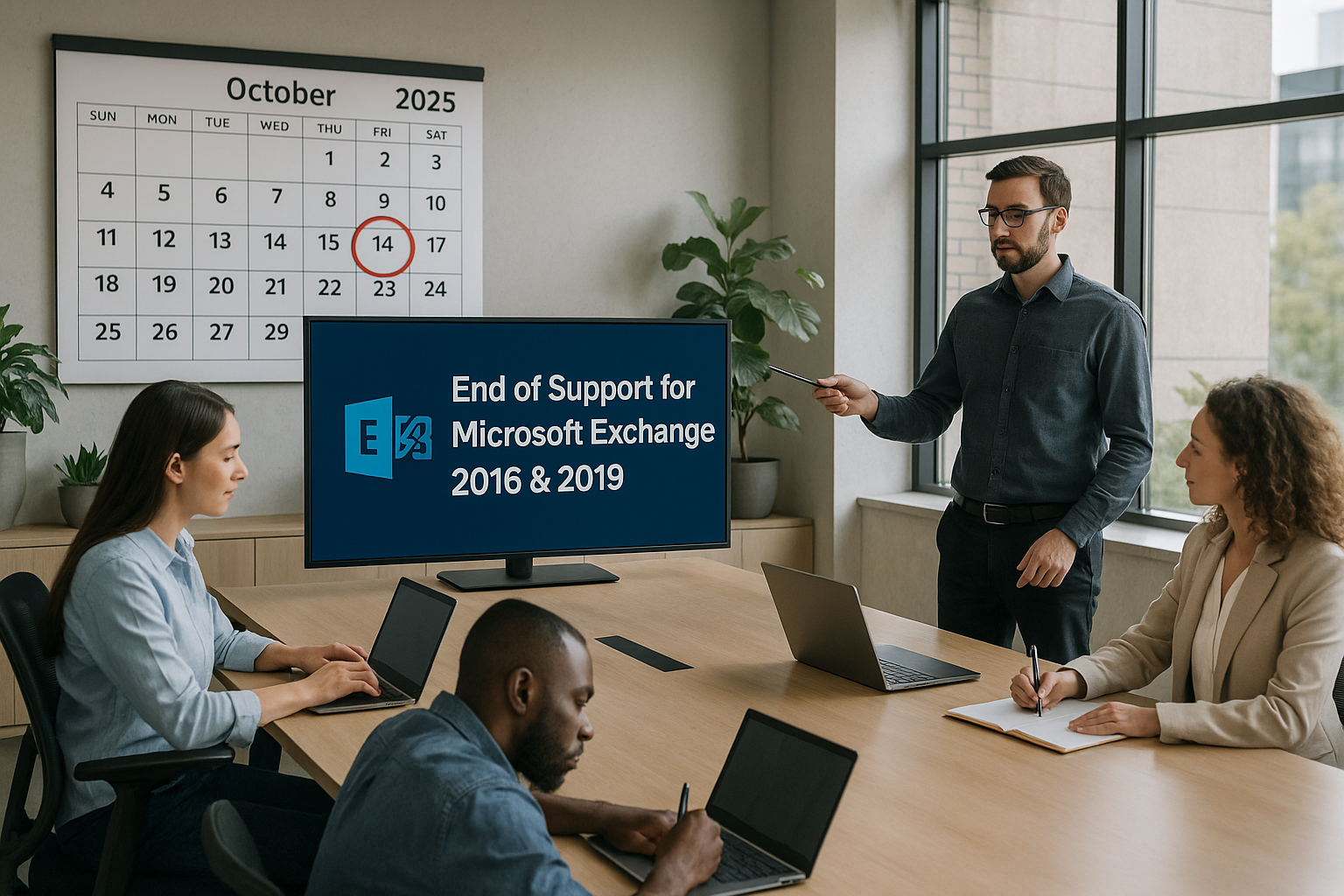What’s happening:
Microsoft has announced that Exchange Server 2016 and Exchange Server 2019 will reach the end of their extended support as of October 14, 2025. After that date:
- Microsoft will no longer provide technical support for these product versions.
- Bug fixes, security updates, time-zone updates will stop.
- This means elevated risk: Vulnerabilities may be found after that date that won’t be fixed, potentially exposing servers to security threats.
Why it matters:
For organizations still running these versions, continued use after support ends carries tangible risks:
- Security risk – No security patches mean any new vulnerabilities could be open to exploitation.
- Compliance risk – Depending on industry/regulation, using unsupported software may breach compliance, audit, or liability standards.
- Operational risk – Bugs or issues that arise will not receive official fixes, possibly leading to stability or performance problems.
- Compatibility / feature gap – Over time, integration with newer tools, services, or cloud-based systems may suffer or fail altogether.
What are the options:
Microsoft is recommending two primary migration/upgrade paths:
- Migrate to Exchange Online, which is part of Microsoft 365 / Office 365. This shifts your mail infrastructure to Microsoft's managed cloud-offering.
- Upgrade to Exchange Server Subscription Edition (SE). For those preferring on-premises or hybrid setups, this is the newer version Microsoft is promoting.
Additionally:
- If you are on Exchange 2019, you can perform an in-place upgrade to the Subscription Edition, which Microsoft says is like installing a cumulative update.
- If you are on Exchange 2016, Microsoft recommends a side-by-side (“legacy”) upgrade path to Exchange SE.
- If still running Exchange 2013 or earlier, those must be removed or otherwise migrated before certain upgrades or installs.
Steps your organization should take now:
To ensure smooth transition and mitigate risk, here are recommended steps:
|
Step
|
Action
|
Purpose
|
|
Inventory & Assessment
|
Identify all Exchange Server instances (versions, patch levels, workloads, integrations).
|
Understand what you have, dependencies, and what must be migrated or upgraded.
|
|
Evaluate options
|
Assess whether moving to the cloud (Exchange Online) makes sense vs staying on-premises (Exchange SE) or hybrid. Consider cost, security, performance, compliance.
|
Choose the path aligned with business strategy, budget, and constraints.
|
|
Plan migration or upgrade
|
Define roadmap: Timelines, resources, hardware (if upgrading), data migration, user impact, downtime, etc.
|
Avoid surprises and minimize business disruption.
|
|
Test
|
Before full rollout, test in non-production: Upgrade paths, compatibility with existing systems (antivirus, backup, mail clients, custom integrations).
|
Identify issues early; ensure all dependent services will function correctly.
|
|
Implement
|
Carry out migrations/upgrades according to plan. Monitor closely.
|
Move off unsupported software before deadlines.
|
|
Post-migration review
|
Ensure all security/updates are applied, backups are working, performance is acceptable, and user training/support are in place.
|
Stabilize the new environment.
|
Why having a professional services partner helps:
If your organization lacks internal bandwidth or expertise, engaging experienced professional services can offer:
- Expertise in planning and executing migrations or upgrades, especially in complex or regulated environments.
- Reduced risk of data loss or business disruption.
- Access to best practices, tools, and tested methodologies.
- Accelerated time to completion, which is especially critical here given the fixed deadline.
Conclusion:
The October 14, 2025 deadline for Exchange Server 2016 & 2019 support represents a hard cutoff for Microsoft support and security maintenance. Organizations still using these products need to act now to avoid exposure to security, compliance, and operational risks.
For many, that means migrating to Exchange Online or upgrading to Exchange Subscription Edition. The key is to plan carefully, test thoroughly, and ensure minimal disruption to business operations.
If you and your organization would like assistance, please contact our Helient team of experts specialized in Microsoft technologies at service@helient.com.


